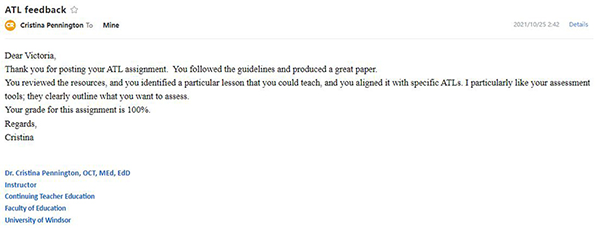victoriachoy.github.io
Teaching Portfolio
| Teaching Philosophy | Professional Growth | Honors | Associations |
A Life-long Inquirer

Learning and teaching experiences keep shaping our identity throughout the life-time teaching career. The identity-construction inquiry has prompted me to critically analyze the similarities and differences between China and the west in social, economic, political, historical, cultural and educatinonal contexts. One of the recent findings is the possible integration of IB philosophy and methodology into teaching Chinese as a foriegn language. Through seminars held by CTCSOL and literature by IB and non-IB scholars, I have compared and contrasted the methodology of CTCSOL and IPA, from both of which I have acquired Mandarin teaching certificates. Having known about the political nature of education, I have also inquired about the state capitalism in the east vs the counterpart in the west. With the new set of national transdisciplinary curricula for compulsory education to be effected this September, opportunities and challenges are worth exploring in the local context, including the alignment of the new curricula with IB PYP transdisciplinary framework, the provision of teaching faculty, resources for inquiry, and readiness of the learning community.
References:
Mark K Shum, Ian Hill, 2015, Infusing IB Philosophy and Pedagogy into Chinese Language Teaching
https://www.amazon.com/Infusing-Philosophy-Pedagogy-Language-Teaching/dp/1909717657
Ministry of Education, P.R.C. China, April 2022, MOE releases compulsory education curriculum program and standards
http://en.moe.gov.cn/news/press_releases/202205/t20220507_625532.html
Effective Learning and Teaching Informed by Diagnostic, Formative and Summative Assessment

Assessment Culture has arisen as valid measures of learning against traditional tests since the 20th century. It develops within the learning community shared understanding and language of what, why and how to assess to inform and adjust teaching and learning. Fostering assessment culture requires development of assessment capability, integrated-assessment policy, collaboration in assessment among students and teachers,and professional development.
Diagnostic Assessment and Formative Assessment
I find Using Student-Involved Classroom Assessment to Close Achievement Gaps the most inspiring to me. The article criticizes norm-referenced tests for their insufficiency and advocates the prioritization of student-involved classroom assessment to reduce achievement score gaps. Three tools for student involvement are elaborated in assessment process to define and apply criteria, record keeping to monitor improvements and communication to share self-assessment with others. Four conditions to reduce achievement gaps and use assessment effectively are elicited: focus on clear purposes, accurate reflections of improvement, continuous descriptive feedback on improvement, student involvement in classroom assessment process.
Functions of Diagnostic and Formative Assessment (Brown and Sanford, 2011, p.8)
-
Using screening and formative assessment data to identify students at risk for poor learning outcomes
-
Monitoring the effectiveness of instruction (i.e., progress monitoring)
-
Implementing multi-leveled evidence-based instruction that is matched to students’ instructional needs
-
Data-based decision making for instruction, movement within the multi-level system, and disability identification (in accordance with state law)
Example of Formative Assessment Designed for Approaches to Learning (1.5-2 years old)

Instructor’s Feedback

Summative Assessment

References:
Julie Esparza Brown and Amanda K. Sanford, 2011, RTI for English Language Learners: Appropriately RTI for English Language Learners
Rick Stiggins and Jan Chappuis, Using Student-Involved Classroom Assessment to Close Achievement Gaps Wolfram Rollett · Hannah Bijlsma · Sebastian Röhl, 2021, Student Feedback on Teaching in SChools
https://link.springer.com/content/pdf/10.1007/978-3-030-75150-0.pdf
| Back to Collaborator | Differentiation & Visible Thinking Routines |
📧 Contact: 175709572@qq.com | guitaracole@gmail.com